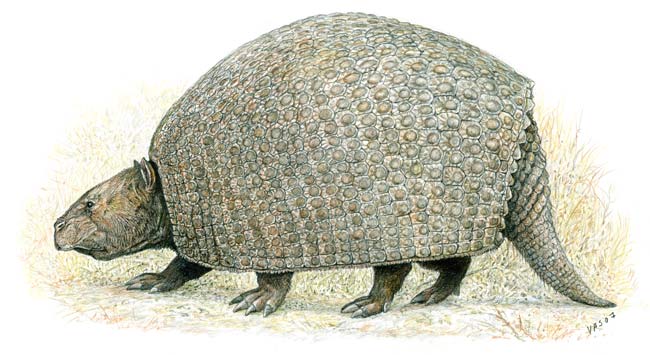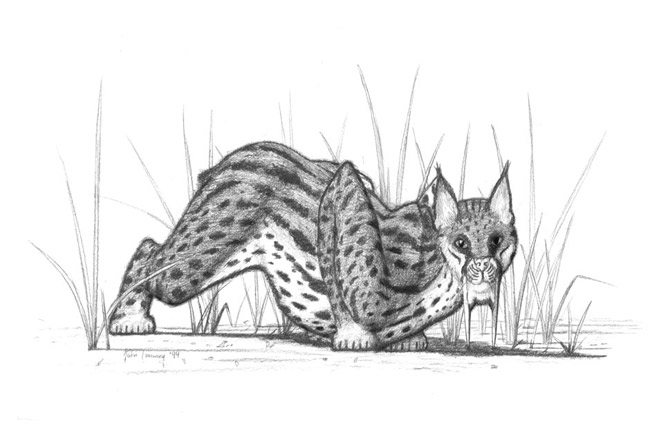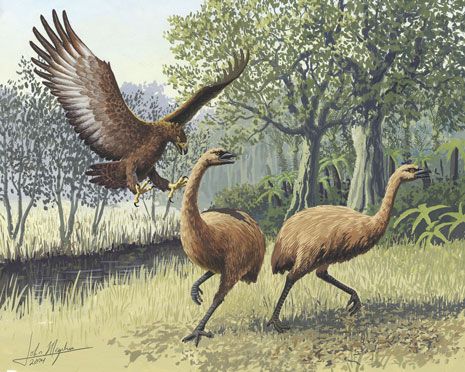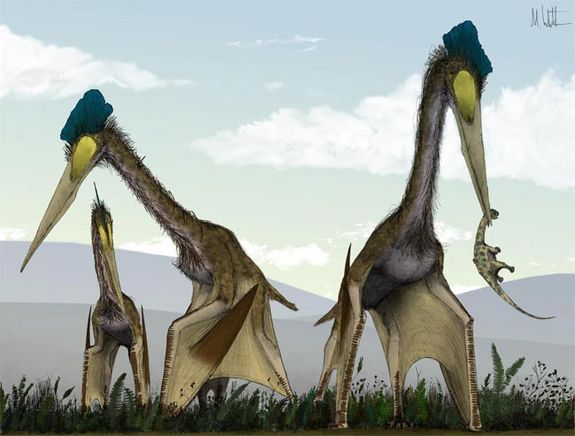Image gallery: 25 amazing ancient beasts
Indohyus

This ungulate Indohyus ranged in India 48 million years ago. Indohyus is a close relative of whales, and the structure of its bones and chemistry of its teeth indicate that it spent much time in water. In this reconstruction, it is seen diving in a stream, much like the modern African Mousedeer does when in danger.
Glypto Armadillo

This primitive, oversized armadillo relative, P. septentrionalis, likely weighed 200 pounds. It roamed high in the Andes in northern Chile 18 million years ago.
Smilodon Cat

Weighing an average of 550 pounds (250 kilograms), this saber-toothed cat, Smilodon fatalis, had a weaker bite than modern-day lions. Saber-toothed cats, often incorrectly called tigers, were social creatures that had a bite far less powerful than commonly thought.
Giant Eagle

The Haast's eagle of New Zealand, which lived just 700 years go, was 40 percent larger than today's record holder, the Harpy eagle, and it topped the local food chain. Here one is shown attacking the extinct New Zealand moa. The eagle grew so large it approached the physical limits of flight. The eagle, which was the subject of cave paintings and mythological tales from New Zealand s first inhabitants, the Maori, went extinct soon after the arrival of man, as did a number of other species on the islands. [READ MORE]
Dino-Baby Eater

A group of flying reptiles called Quetzalcoatlus may have strolled along a fern prairie eating baby dinosaurs for lunch. The reptiles may have even snacked on Tyrannosaurus Rex babies. Research suggested Quetzalcoatlus, which lived during the age of dinosaurs some 230 million to 65 million years ago did not catch prey in flight, but rather stalked them on land.
Get the world’s most fascinating discoveries delivered straight to your inbox.



